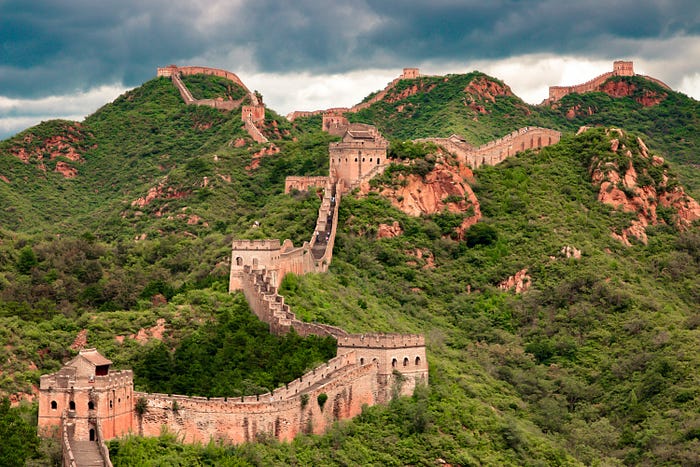From Bricks to Rice Flour: Surprising Materials Used to Build the Great Wall
The Great Wall of China is one of the most impressive man-made structures in the world, spanning over 13,000 miles across northern China. The wall was built over a period of centuries, with construction beginning as early as the 7th century BCE and continuing until the Ming dynasty in the 17th century CE. While much is known about the wall’s history and construction techniques, many people are surprised to learn about the wide variety of materials that were used in its construction.

When most people think of the Great Wall, they envision massive bricks and stone blocks stacked on top of one another to form the wall’s impressive structure. And while this is certainly true in many sections of the wall, it is far from the only material that was used. In fact, the Great Wall was built using a variety of materials, including some that may surprise you.
One of the most unexpected materials used to build the Great Wall is rice flour. This may seem like an unlikely choice for a construction material, but in fact, rice flour was an important component of the mortar used to hold the wall’s bricks and stones together. Rice flour was mixed with lime, sand, and water to create a sticky, paste-like substance that was used to bond the wall’s building materials.
Other surprising materials used to build the Great Wall include reeds, tamarisk branches, and even human hair. Reeds and tamarisk branches were used to reinforce the Great Wall’s foundation, while human hair was sometimes mixed into the wall’s mortar to help it bind more effectively.
Another unusual material used in the Great Wall’s construction is glutinous rice. This type of rice is stickier than regular rice and was used to make a special kind of mortar that was particularly resistant to erosion. The glutinous rice was mixed with lime and water to create a strong, durable mortar that could withstand the harsh weather conditions of northern China.
Even animal products were used in the construction of the Great Wall. Egg whites, for example, were used to create a sealant that was used to make the wall’s surface smoother and more weather-resistant. And in some cases, the fat from slaughtered animals was used to lubricate the wall’s sliding gates and hinges.
In addition to these more unusual materials, the Great Wall was also built using more traditional materials such as brick, stone, and wood. However, the use of such a wide variety of materials highlights the ingenuity and resourcefulness of the wall’s builders, who were able to create a massive, enduring structure using whatever materials were available to them.
The Great Wall of China is an impressive feat of engineering and construction, and its use of a wide variety of materials is just one testament to the creativity and resourcefulness of its builders. From rice flour to animal products, the materials used in the wall’s construction are a fascinating reminder of the ingenuity and skill of the people who built this incredible structure.
